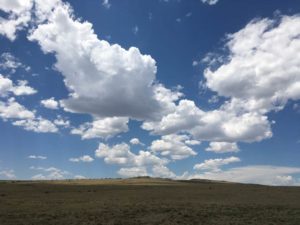An example of how the easement numbers work:
Say you have a 2,000-acre ranch, appraised at $500/acre for a total value of $1 million. Since a conservation easement limits future development, the value of the property with the easement in place is reduced or diminished by some percentage as determined by an appraiser. This ‘diminution’ rate determines the value of your donation, or in other words, the conservation easement (CE) value.
In our example, let’s use a diminution rate of 50%, equal to $500,000. When the easement is then donated to a nonprofit land trust (NMLC), the CE value ($500,000) is deductible from your federal income tax.
Also, if the easement qualifies for a NM state tax credit, a landowner will receive either a tax credit worth half the CE value, up to $250,000 ($500,000 if both husband and wife own the property) OR, the landowners can sell that tax credit for 80% of its value, or $200,000 in cash per our example ($400,000 if both husband and wife own the property.
Since the annual tax credit cap is $250,000 ($500,000 for joint ownership), some ranchers with larger properties place easements over their ranches in phases across several years, each phase calculated to maximize the total number of tax credits a landowner can receive based on their property’s size and value.
There are costs associated with conservation easements, which also have to be factored into the total calculation.

